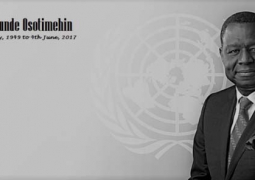Rape, sexual violence and spread of HIV/AIDS
NO CHILD, NO WOMAN AND NO MAN EVER DESERVED TO BE RAPED, ABUSED OR ASSAULTED
These are the words of DR AZADEH, Senior Lecturer of the University of the
World AIDS day, observed December 1 each year, is dedicated to raising awareness of AIDS pandemic caused by spreading of HIV infection worldwide
AIDS killed more than 25millon people, between 1981-2007, and an estimated 33.2 million people worldwide living with HIV, making it one of the most destructive epidemics in record history.
World AIDS day first conceived in August 1987 by JAMES W. BUNN and THOMAS NETTER, two public information officers for the Global Programme on AIDS at the WHO Geneva.
What are definitions of Rape and Violence?
Rape is an act of violence and domination and anger. It uses sexual acts including penetration as weapons. Rape is a subject which most people find uncomfortable. For women it conjures up all kinds of images. Some of us will think of dirty old men in plastic coats, or a monster too gross to think about. Others will have more specific ideas about rape, perhaps thinking about a certain group of men such as ‘weirdos in dark alleys.
Rape and sexual assault happen far more often than statistics indicate. You may find that the people around you do not really understand about rape - most of us are shielded from knowing what actually happens until we, or persons close to us, are affected. The rapist may have used physical violence and/or verbal intimidation. He may have done humiliating things to you. Perhaps he threatened the safety of your family. He may have been someone you know - a partner, ex-partner, friend, neighbour, workmate, relative or carer.
Every woman in our society feels the fear of rape - no woman is allowed to ignore it. We are taught as children to be afraid of ‘strange men’ who offer us sweets, lifts, etc. Women are taught as adults to keep our doors locked, not to be alone, not to look or act in any way that might ‘bring rape upon ourselves’. Perhaps the most obvious situation in which we are taught to be afraid is when we walk home alone at night. The threat of violence is a total intrusion into women’s personal space and transforms a routine and/or potential pleasurable activity (for example, a walk in the street, a quiet evening at home) into a potentially upsetting, disturbing and often threatening experience.
What is sexual (indecent) assault?
Sexual assault is an act of physical, psychological and emotional violence, in the form of a sexual act, which is inflicted on someone without consent. It can involve forcing or manipulating someone to witness or participate in any sexual acts.
Rape prevalence in
Rape of a woman or girl had been perpetrated by 27.6% of the men interviewed and 4.6% of men had raped in the past year. Rape of a current or ex-girlfriend was disclosed by 14.3% of men. Since many men had raped more than once, rape of a woman or girl who was not a partner was actually more often reported than rape of partners. In all only 4.6% of men had raped a partner and not raped a woman who was not a partner (i.e. an acquaintance or stranger). 11.7% of men had raped an acquaintance or stranger (but not a partner) and 9.7% had raped both.
In total, 8.9% said they had raped with one or more other perpetrators when a woman didn’t consent to sex, was forced or when she was too drunk to stop them. Rape of men and boys was also reported, 2.9% said they had done this. Attempted rape was reported by 16.8% of men and 5.3% of men said they had done so in the previous 12 months.
Patterns of rape
Nearly one in two of the men who raped (46.3%) said they had raped more than one woman or girl. In all, 23.2% of men said they had raped 2-3 women, 8.4% had raped 4-5 women, 7.1% said they had raped 6-10 and 7.7% said they had raped more than 10 women or girls. Asked about their age at the first time they had forced a woman or girl into sex, 9.8% said they were under 10 years old, 16.4% were 10-14 years old, 46.5% were 15-19 years old, 18.6% were 20-24 years old, 6.9% were 25-29 years and 1.9% were 30 or older.
Men who disclosed having raped were significantly more likely to have engaged with a range of other risky sexual behaviours. They were more likely to have ever had more than 20 sexual partners, transactional sex, sex with a prostitute, heavy alcohol consumption, to have been physically violent towards a partner, raped a man, and not to have used a condom consistently in the past year.
Associations between physical intimate partner violence and HIV/AIDS
In all 42.4% of men had been physically violent to an intimate partner (current or ex-girlfriend or wife). Asked about physical violence in the past year, 14.0% (95%CI 12.4, 15.7) of men disclosed perpetration. Men who disclosed violence were very much more likely to have engaged in a range of risky sexual behaviour, as well as to have raped and been raped.
A logistic regression model of factors associated with having HIV showed that men who had been physically violent to a partner on more than one occasion were significantly more likely to have HIV (OR 1.48 95% CI 1.01, 2.17, p0.04). Other associated factors were being African, rather than of another race group, being 25 or older, and having had a genital ulcer. Those who had completed matric at school or attended tertiary education and those who were circumcised were less likely to be infected.
sexual risk taking, and indeed the finding that women who experience violence are more likely to have HIV (Dunkle et al 2004).
This is explained by an underlying construction of masculinity which is predicated on use of violent and sexually behaviours. It has been argued that this is a key driver of the HIV epidemic and our finding supports this. HIV prevention needs to embrace and incorporate promoting more gender equitable models of masculinity.
Recommendations:
1. Rape prevention must focus centrally on changing social norms around masculinity and sexual entitlement, and addressing the structural underpinnings of rape.
2. Post-exposure prophylaxis is a critical dimension of post-rape care, but it is just one dimension and a comprehensive care package needs to be delivered to all victims and should include support for the psychological responses to rape.
3. HIV prevention must embrace and incorporate promoting more gender equitable models of masculinity. Intervention that do this effectively must be promoted as part of HIV prevention
4. For further information contact DR AZADEH on tel. 7774469/3774469




